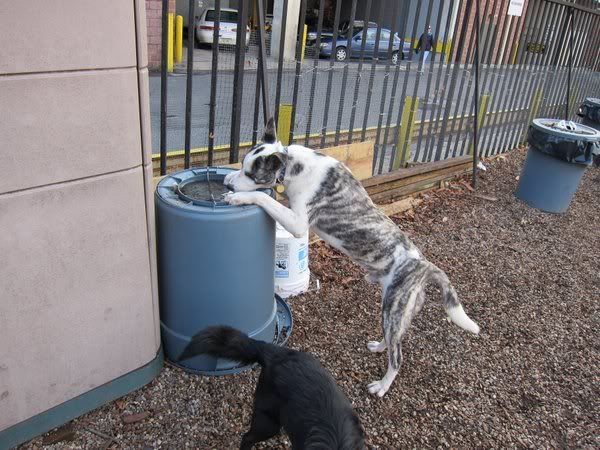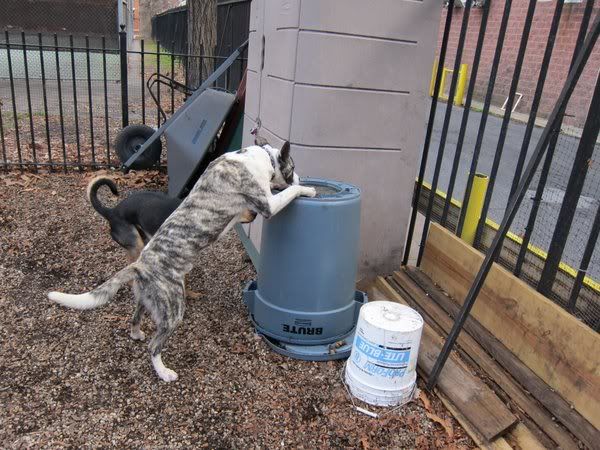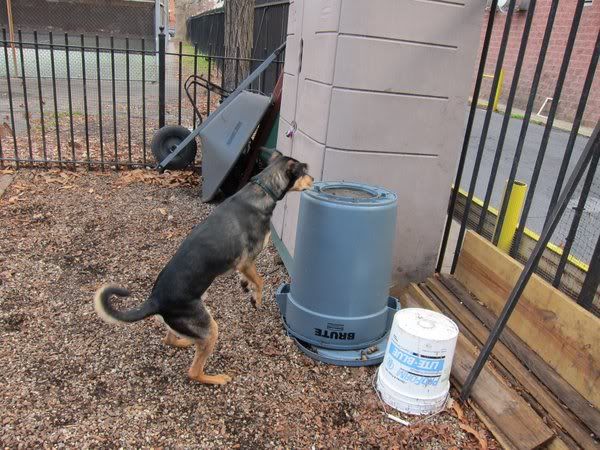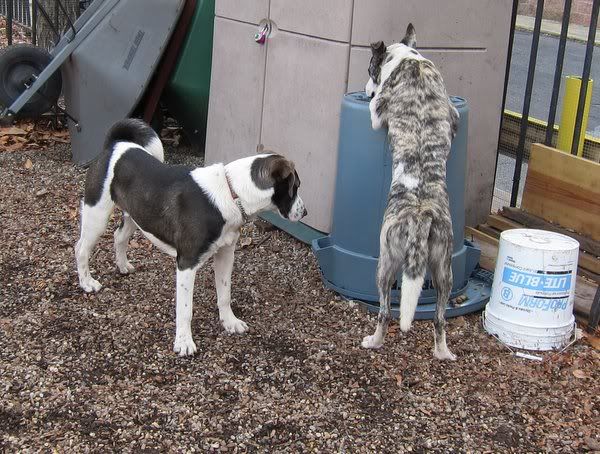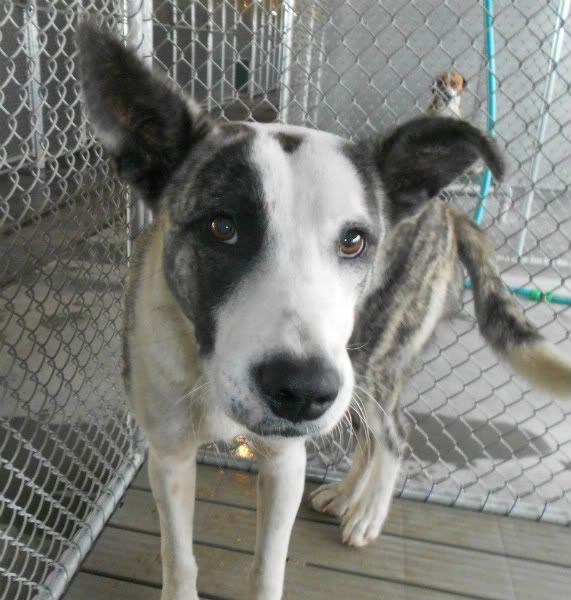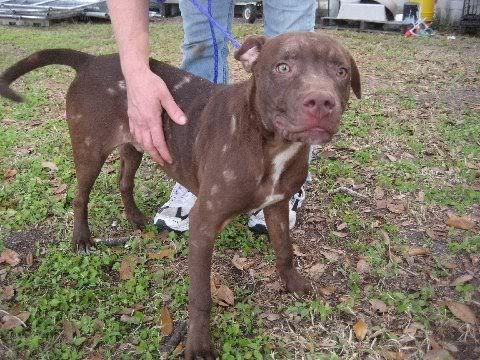2011 was a mostly good year.
I learned a lot about dogs and dog rescue. But I still have a lot more to learn -- a LOT more -- and much of 2012 will be dedicated to that.
Pongu's fearfulness proved to be much more deep-seated than I realized when I adopted him. I now know that the rest of his life will be an ongoing effort to give him the tools he needs to cope in life and manage the situations that he can't yet handle. In 2011 we consulted with several trainers and behaviorists who gave us many good suggestions, and began working with their recommendations. We will continue that into the new year... and forever after.
But it's worth reflecting on how far he's come in the past year. Windy days still make him nervous, but Pongu no longer shies from stationary objects on the street. He doesn't bolt at the sound of sirens or SEPTA buses. He can (sometimes) hold a heel for two blocks on end, and he can keep up with fast-to-slow pacing changes without losing position. He LOVES the dog park, which terrified him in puppyhood, and he has impeccable doggy manners. His recall and focus in the park, even in the face of all the fun he could be having with other dogs, make me proud. Dog people who met him a year ago and see him today are amazed at how much he's changed.
Pongu is by no means perfect, and his confidence directly depends on having me around, but I'm honored by the trust that my little spazmonkey puts in me and I will try to be worthy of it.
ADDITIONALLY 2011 was the year in which Pongu-e and I decided that canine musical freestyle was the dog sport best suited to my mutt's particular combination of (a) exceptional intelligence; (b) exceptional janky-leggedness; and (c) exceptional handler bond (read: total psychotic dependency). We joined the World Canine Freestyle Organization and started taking serious dog nerd classes. In 2012, my goal is to have Pongu earn his Beginner title in WCFO, which will require learning and performing at least two separate routines to a fairly high degree of proficiency. Pretty ambitious for this crazy little mutt, and maybe we won't get there, but it would be nice to have a title (any title!) to validate the work we've done.
Foster-wise, we took in and placed four mutts in 2011.
Nessie: Abandoned with her newborn pups in Georgia, 18-month-old Nessie hitched a ride to Philly and became our very first foster monster. She was a completely un-identifiable Yellow Dog mutt: an incredibly gentle, patient, tolerant lady who was in and out of here in exactly ten days -- an ideal first foster experience, and the dog who got me hooked on this gig. She now lives with the bike guy down the block. We see her once in a while. She has great adventures... although, thankfully, those adventures don't include popping up on our roof anymore.
Gremlin: The dog who almost died from being ugly. Gremlin turned up in rough shape on the doorstep of a North Carolina farm. The lady of the house took care of her for a while, but her husband wouldn't let her keep the little monster. So Gremlin went to the local pound, where she came within a day of being euthanized because she was so ugly no one wanted to adopt her.
Gremlin was a problem child. She was a poop monster, a jumper, a wailer and a spaz. Extremely loyal and protective, but not too bright. At first I thought she was a low-to-medium energy dog because she was so unhealthy when we got here, but when she got her health back, she got her real energy level back too.
We had crazy times. Gremlin made me up my training game
a lot. She was the funniest foster dog we've ever had and possibly will ever have. It took over three months to place her, because she was so ugly that no one wanted her here, either, but she finally found a home with two friends of ours in Minneapolis. Yes, they drove all that way to get a gremlin.
She's doing wonderfully in her new home. I'm happy every time I get an update.
Pepper: Seven-month-old Pepper, a bat-eared black Lab mix, was found as a stray and taken to the pound in rural Georgia. She hitched a ride on the puppy caravan to New Jersey and from there found her way to us.
Pepper was an excellent dog almost from day one: affectionate, trusting, and
very smart. She housebroke herself in a week, picked up tricks as fast as I could teach them, and was walking on a loose leash within ten days -- a huge change for a dog initially so overwhelmed by city life that I had to carry her bodily up the stairs the first time she came to our condo.
We only had her two weeks before she went off to live with a retired couple who had just lost their old black Lab. Pepper fit in perfectly there, too.
Stella: The foster monster I almost kept. Stella was a six-month-old hound mix (probably beagle/pit bull, if I had to guess) who was found in a Georgia ditch with her brother. We picked her up on Halloween and sent her home a week before Christmas.
Stella was adorable, clowny, and extremely people-oriented. She was a super quick study who went from knowing nothing to just about CGC-ready in six weeks, plus picking up a couple of tricks on top of that. Everyone loved her; even Pongu didn't
completely hate her (not that this stopped him from repeatedly shoving her under the couch when she tried to climb up). Letting Stella go was the hardest foster parting I've had yet... but two dogs is our maximum, and keeping her would have meant fostering no more.
So let her go we did, and those were our fosters in 2011.
The goal in 2012 is to find, train, and place three to five more muttly monsters. I'm on the hunt for candidates...
